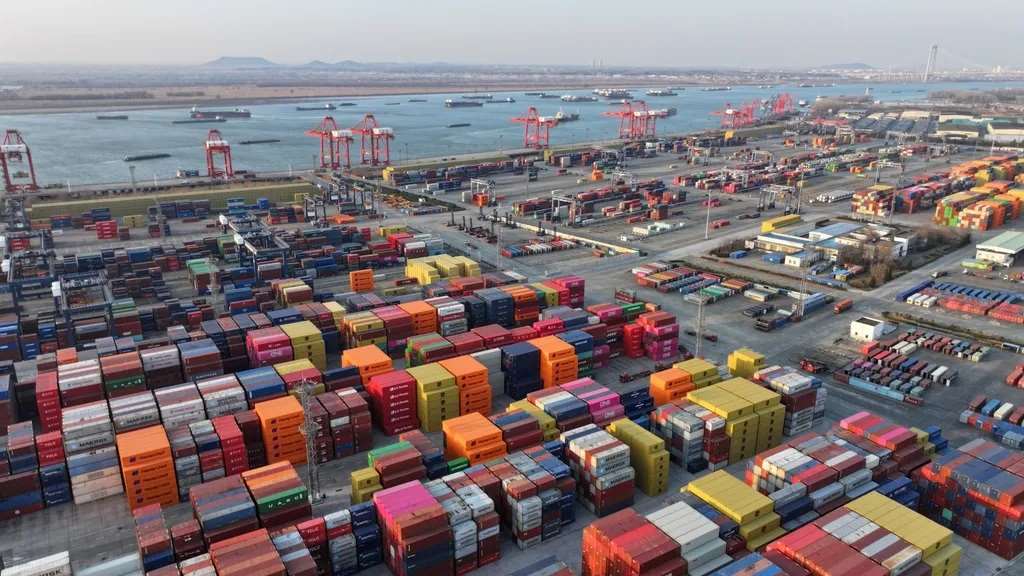
The global apparel trade and retail landscape has thrown up a complex mix of opportunities and challenges in 2025. While major consumer markets continue to display strong import growth, export performances remain uneven across manufacturing hubs, indicating global sourcing trends. A closer look at recent trade data and insights from the Wazir Textile & Apparel Index (WTAI) 9M FY25 reveals the current state of the industry and what lies ahead.
Strong import demand in major economies sign of optimism
January 2025 marked a rise in apparel imports across major consumer markets, reflecting sustained demand and shifting trade dynamics. The US reported a substantial 20 per cent year-on-year increase in total apparel imports, amounting to $7.3 billion. This rise suggests consumer spending on apparel remains resilient despite broader economic uncertainties.
The EU showed even stronger growth, with apparel imports jumping 36 per cent year-on-year to $9.0 billion. This sharp increase could be attributed to multiple factors, including pent-up demand from cautious consumer behavior in previous months, restocking by retailers, and potential shifts in sourcing patterns. Japan, too, recorded a healthy 21 per cent increase in apparel imports, reaching $2.3 billion, reinforcing the positive trend in consumer demand across major markets.
Exports highlight shifting sourcing dynamics
While import demand remains strong in consumer markets, February 2025 threw up a mixed picture for major apparel-exporting nations, highlighting potential shifts in global sourcing preferences. Bangladesh, a dominant player in global apparel manufacturing, maintained steady export levels at $3.2 billion, reflecting its stable position in the international market.
India, on the other hand, displayed positive momentum, with a 7 per cent year-on-year increase in apparel exports, reaching $1.5 billion. This growth underscores India’s rising competitiveness, possibly driven by improved manufacturing capabilities, competitive pricing, and an expanding product mix catering to global demand.
China, the world's largest apparel exporter, experienced a sharp decline, with exports dropping 30 per cent year-on-year to $6.4 billion. The reduction could be due to multiple factors, including rising labor costs, ongoing trade tensions, supply chain disruptions, and a push by global brands to diversify their sourcing strategies. This downturn in Chinese exports signals a potential shift in the global apparel supply chain, as retailers and brands look to alternative manufacturing hubs.
US retail’s positivity amidst economic nuances
The retail sector in the US showed encouraging signs, with apparel store sales in February 2025 registering an 11 per cent increase compared to the same period last year. This upward movement suggests strong consumer interest in fashion despite economic uncertainties. Home furnishing stores also reported a 12 per cent rise in sales, reflecting continued consumer spending in lifestyle and home-related categories.
However, the broader economic picture in the US is a mixed one. Inflation eased to 2.8 per cent in February, providing some relief, yet consumer confidence dipped slightly to 102.7 from 104.1 in the previous month. This decline, despite easing inflation, hints at underlying economic concerns that could impact retail spending in coming months. The interplay between robust retail sales and cautious consumer sentiment will be critical to monitor as 2025 unfolds.
Indian T&A sector shows resilience
Amidst the shifting global landscape, India’s textile and apparel sector continues to display strong performance, as highlighted in the Wazir Textile & Apparel Index (WTAI) 9M FY25 update. The index, which tracks the financial performance of leading textile and apparel companies in India, underscores robust growth in both segments.
In the textile sector, the Wazir Textile Index (WTI) reported a 9 per cent increase in sales over the first nine months of FY25 compared to the previous year, indicating strong demand for Indian textile products. More importantly, profits showed significant growth, with EBITDA rising 20 per cent, reflecting improved efficiency and better cost management by companies. The third quarter of FY25 continued this positive momentum, with consolidated sales growing by 11 per cent and EBITDA margins improving by one percentage point.
The apparel segment, as captured by the Wazir Apparel Index (WAI), showed even stronger growth, with a 25 per cent rise in sales over the same period. EBITDA for apparel companies grew 19 per cent, suggesting that the industry is capitalizing on growing global demand and higher-value product offerings. Q3 continued this trend, with a notable 11 per cent increase in consolidated sales.
The overall performance of listed Indian textile and apparel companies further reinforces this positive outlook, with consolidated sales rising by 10 per cent in 9M FY25 compared to the previous year. Improved EBITDA margins signal greater profits, positioning India as a key contender in the global apparel trade.
Positivity in global apparel trade in 2025
The global apparel trade and retail landscape in early 2025 is marked by strong consumer demand in major economies, evolving sourcing strategies, and fluctuating macroeconomic conditions. While apparel imports in markets such as the US, EU, and Japan remain robust, export trends reveal a more complex picture, with India gaining traction and China experiencing notable setbacks. The US retail sector’s positive sales figures contrast with reducing consumer confidence, indicating potential headwinds that must be carefully monitored.
In India, the textile and apparel industry continues to grow steadily, with strong sales and profit metrics underlining its growing role in global trade. As sourcing patterns evolve, India’s increasing competitiveness may position it as a key alternative to traditional manufacturing giants.
Looking ahead, the industry will need to navigate a dynamic environment shaped by consumer demand shifts, supply chain realignments, and broader economic trends. The performance of major exporting countries and consumer confidence in leading markets will remain critical indicators of the global apparel trade’s growth path. India’s sustained growth in both textiles and apparel suggests it is well-positioned to leverage these global shifts, potentially emerging as a stronger force in the apparel manufacturing space. Companies across the value chain will need to stay agile, adapting to changing consumer preferences, economic trends, and trade policies to sustain momentum in this evolving marketplace.











